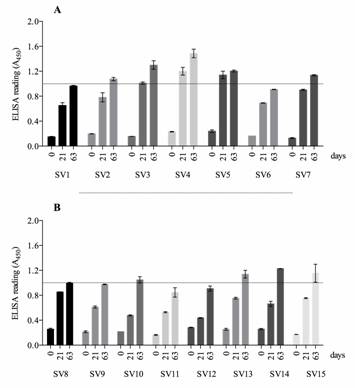ABSTRACT
Glässer's disease is an emergent bacterial disease that affects swine husbandries worldwide causing important economic losses. The aetiological agent, Haemophilus parasuis, is currently divided in fifteen serovars but an increasing number of non-typeable serovars have been reported. Indirect hemagglutination (IHA) is indicated as a serotyping method for H. parasuis. In the present study, we describe an additional step that aims to work around a possible obstacle in the original protocol that may compromise the outcome of this assay. We observed that the choice of anticoagulant for blood collection influences and/or impairs spontaneous adsorption of H. parasuis antigens on sheep red blood cells (SRBCs). However, regardless of the anticoagulant used, chemical treatment of SRBCs with tannic acid induces a stable antigen adsorption (sensitization step). The addition of 1% BSA to SRBCs washing buffer and to antisera dilution augments IHA specificity. Tannic acid treated SRBCs combined with thermo-resistant H. parasuis antigens increases the assay resolution. Thus, our results demonstrate an improvement in the technique of H. parasuis serotyping that will prove valuable to understand Glässer's disease epidemiology and to better characterize serovars involved in outbreaks.
Keywords:
Haemophilus parasuis; diagnosis; tannic acid; serotyping; indirect hemagglutination

 Thumbnail
Thumbnail
